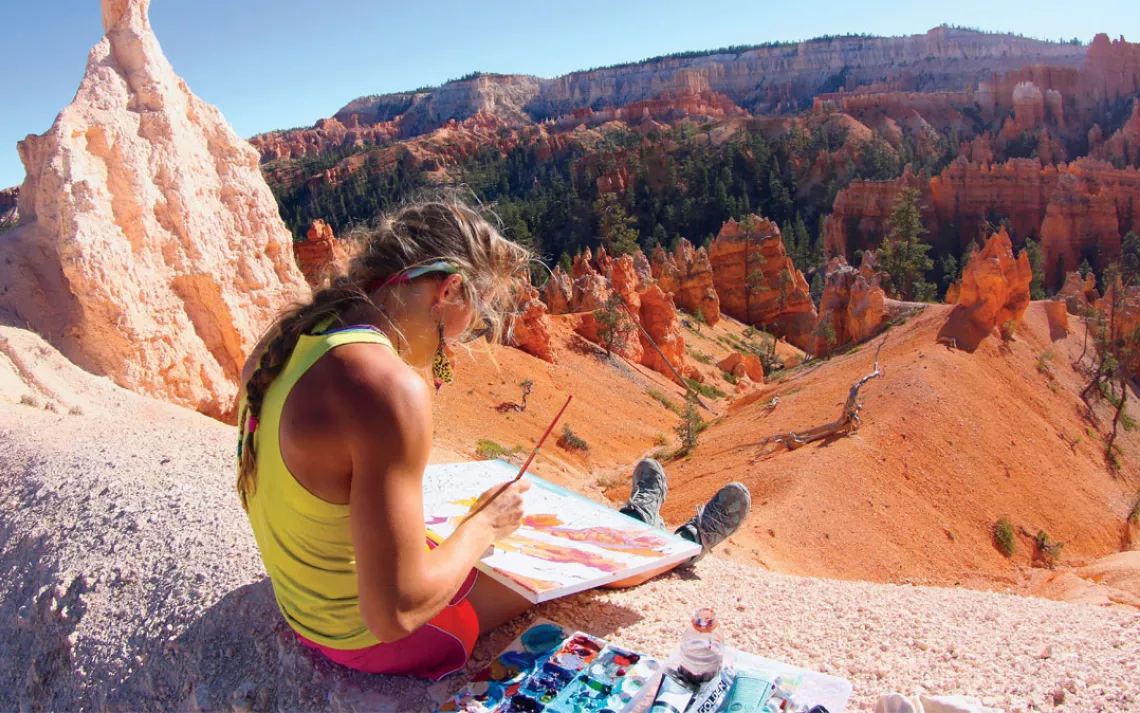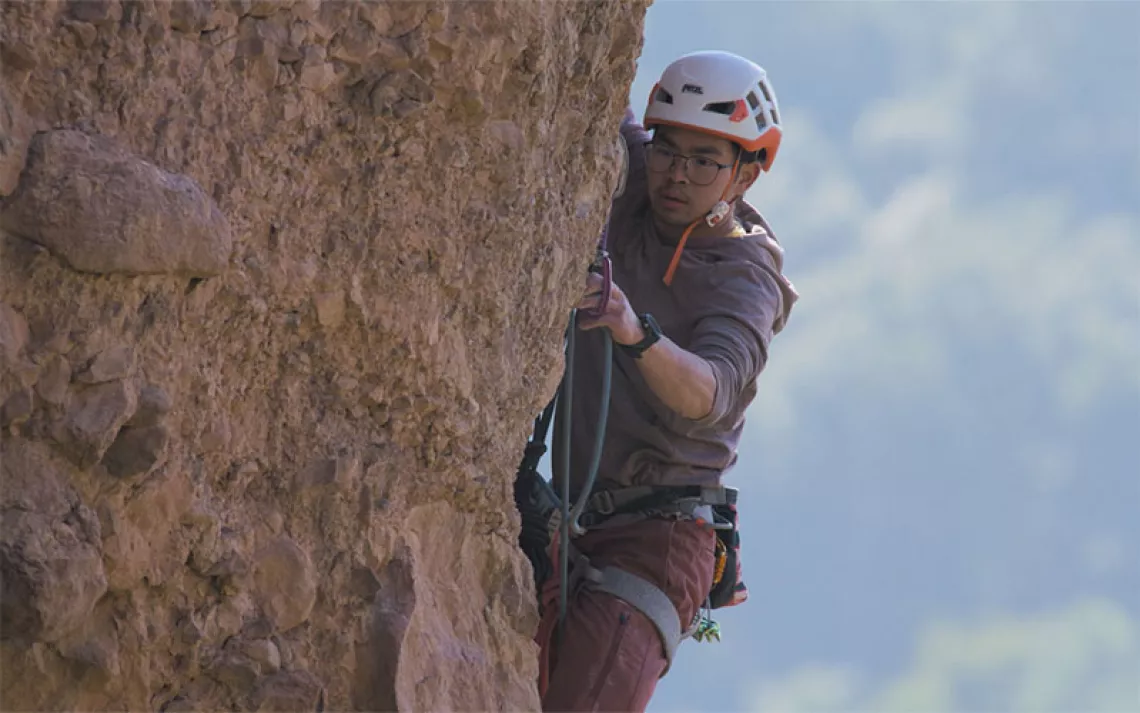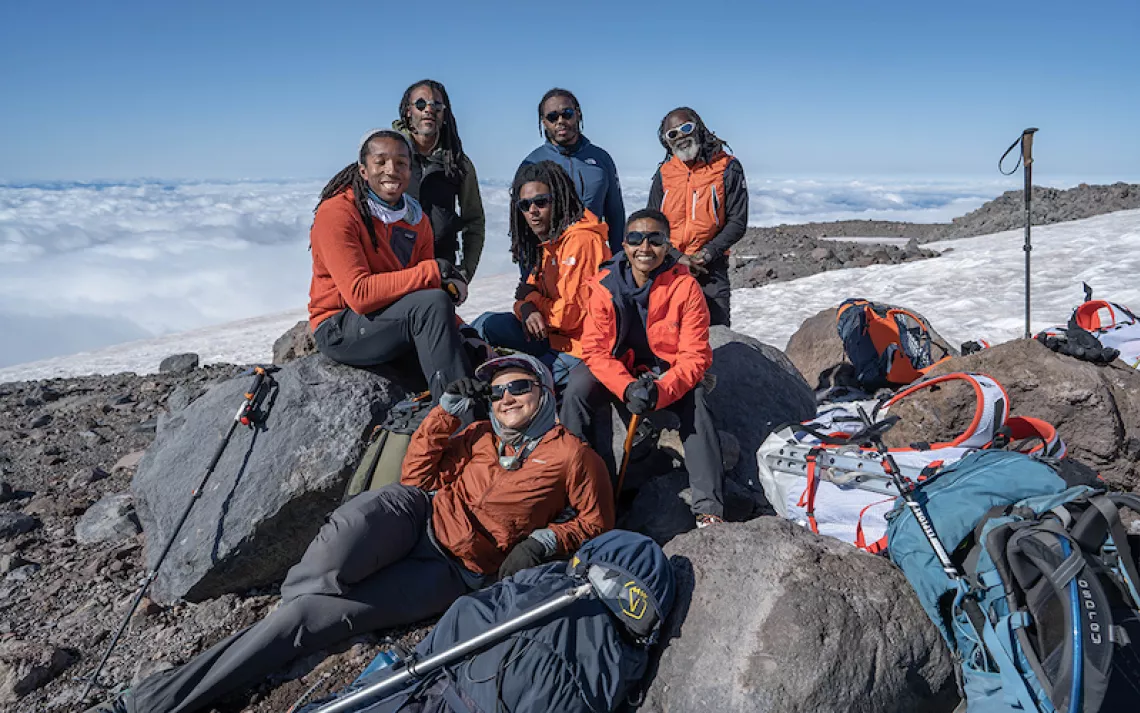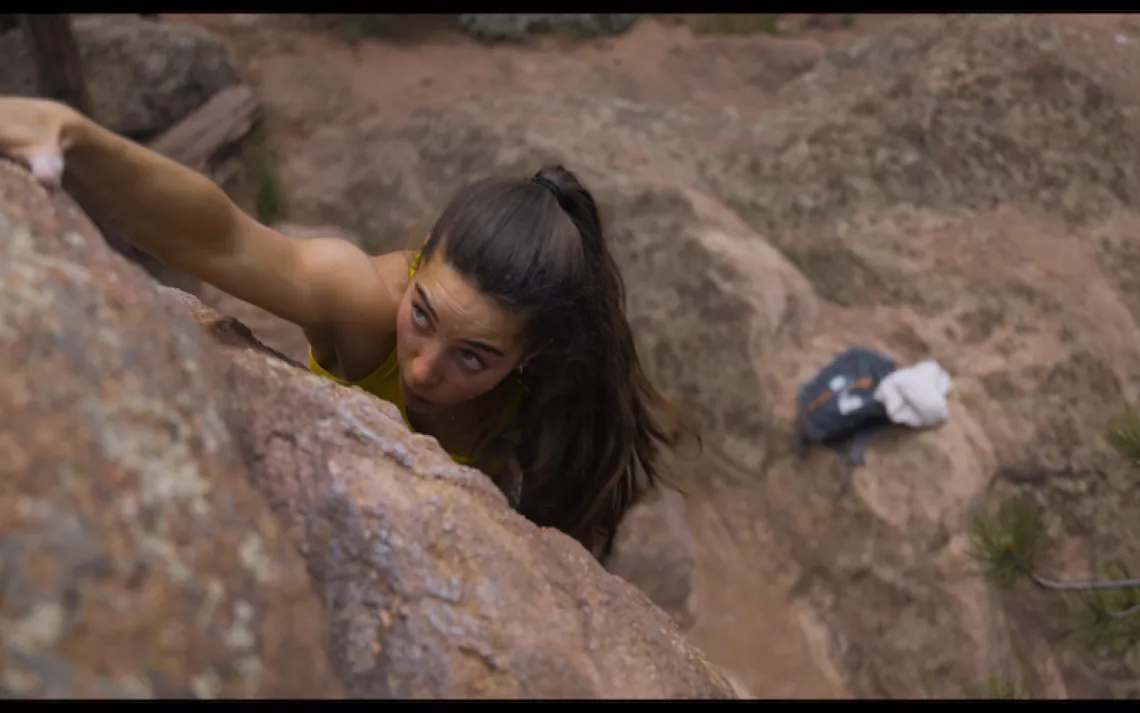The Imax Film "National Parks Adventure" Commemorates the NPS Centennial
The movie, featuring Conrad Anker, is a rollicking good time for the entire family

Rachel Pohl paints Bryce Canyon in Utah, featured in the new Imax film National Parks Adventure. Photo courtesy of MacGillivray Freeman Films/Photographer: Barbara MacGillivray
The family road trip to visit a national park is an all-American rite of passage. It usually starts as something of an ordeal: kids squished in the backseat squabbling, impatient with the miles and bored with the blacktop. But then there's the payoff—the dramatic arrival at the rim of the Grand Canyon, the western mouth of Yosemite Valley, or the vistas of the Grand Tetons. The countless hours in the car suddenly fade away.
In his new Imax film, National Parks Adventure, director Greg MacGillivray re-creates the highlights of the archetypal family vacation via a megascreen tour of America's most iconic national parks. MacGillivray is an auteur of the Imax format; his credits include the blockbuster Everest and the Oscar-nominated Dolphins and The Living Sea. He brings his signature touch to this new production, using the immersive screen size to pull off a neat trick: He magnifies the living wilderness of our national parks to proportions that are larger than life.
The setup is simple. World-class mountaineer Conrad Anker and his stepson, adventure photographer Max Lowe, plus a friend of Lowe's, climber and artist Rachel Pohl, are on a cross-country tour to check out the best of the national parks. Their journey is timed to celebrate the National Park Service's centennial, which is occurring this year. The trio hit Yellowstone and Glacier, the Everglades and Redwood. Over the course of their travels to some 30 parks and monuments, they explore the many ways in which the parks' more than 300 million annual visitors engage with these places.
"We all get such different things out of the parks," Pohl says at one point, a line that serves as the movie's guiding spirit. MacGillivray toggles between emotional paeans to the park ideal and adrenaline-fueled action scenes of derring-do. We get narrator Robert Redford reminding us that the country's "greatest natural wonders belong to no one—they belong to all," followed by scenes of the adventurous bunch scaling Devils Tower, climbing Arches' heights, and mountain biking the Slickrock Trail outside Canyonlands. Every scene is spiked with breathtaking imagery, like when the camera glides among redwoods, offering a hummingbird's-eye view of the forest.
National Parks Adventure is perfect family fare, and the film seems geared to thread the needle between middle schoolers and their parents. There are the obligatory shots of brown bears catching salmon in Alaska's Katmai National Park, and a painfully cute scene of prairie dogs goofing off at Devils Tower. Altogether, it's a lighthearted, rollicking good time.
If anything, it's a bit too lighthearted. We do get a segment on how 19th-century logging devastated the California redwoods, but there's not a single mention of climate change—undoubtedly the parks' greatest 21st-century threat—a glaring omission. Speaking of omission: We see barely any people of color enjoying the parks, a thoughtless oversight given the Park Service's recent efforts to ensure that its visitorship reflects our nation's ethnic diversity.
Aside from these misses, National Parks Adventure is an inspirational celebration of the parks and their mission. There's a lot of joy here, and a lot of wonder, too. "This place is magical," Anker says toward the end of the movie, as the group explores an ice cave at Michigan's Pictured Rocks National Lakeshore. It's a line that could describe any of our country's national parks.
 The Magazine of The Sierra Club
The Magazine of The Sierra Club



